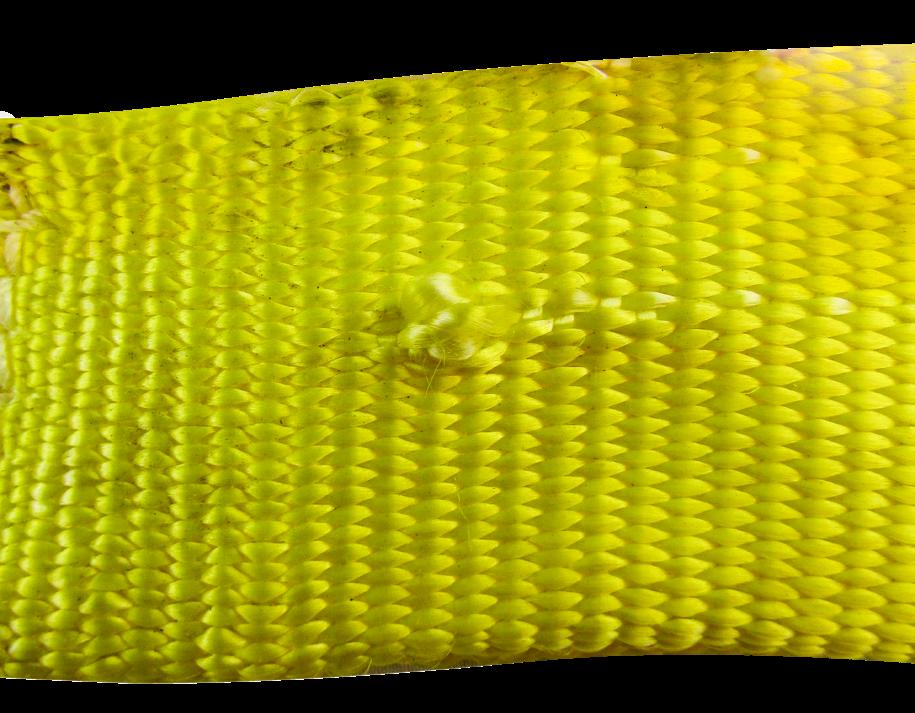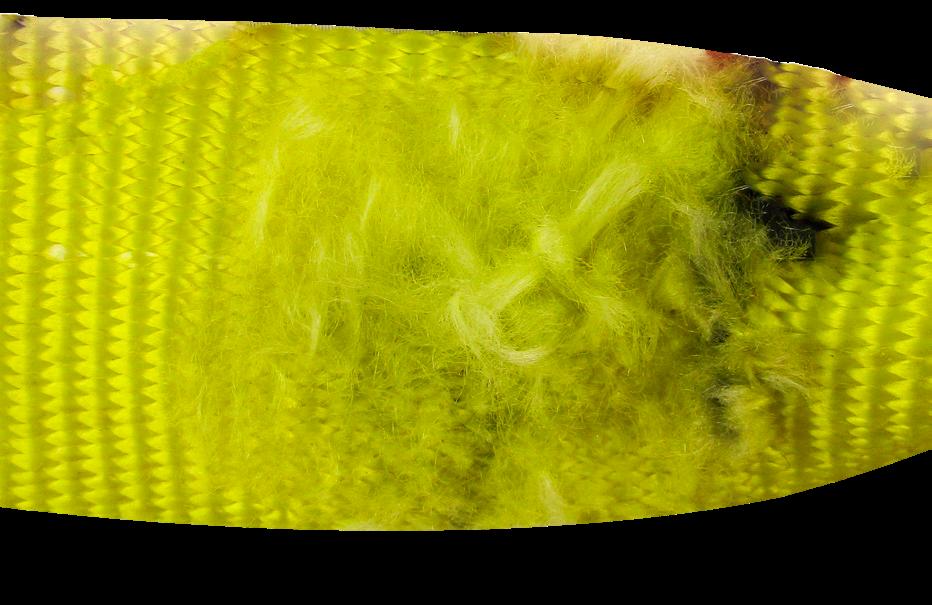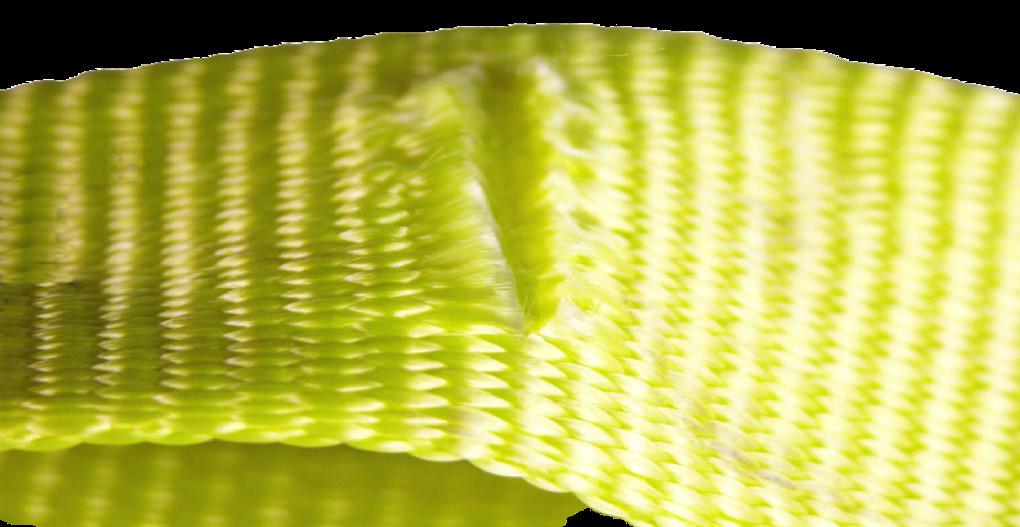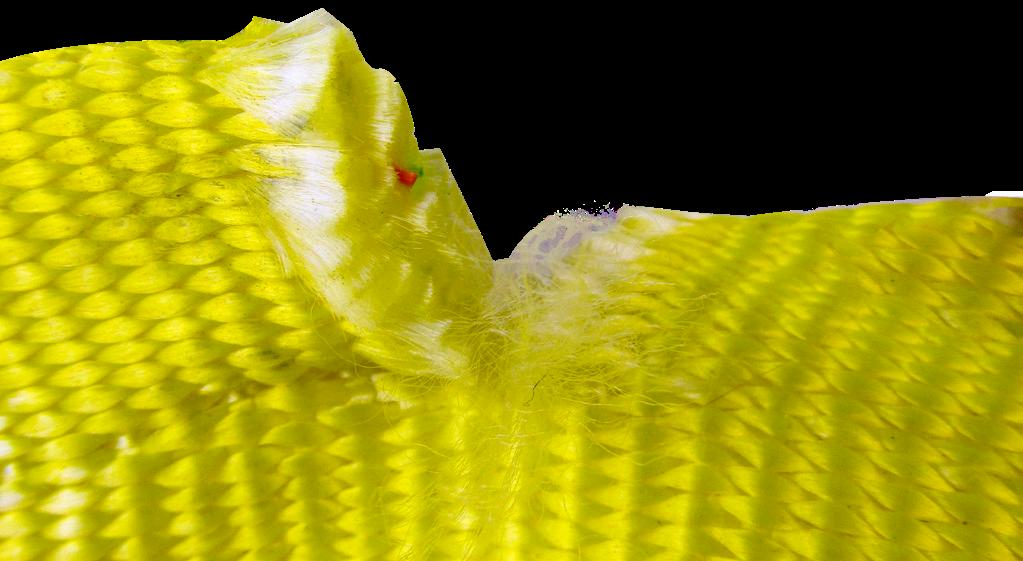
1 minute read
WEB SLING WEIGHTS*
from 2024 Catalog
by Lift-All
Web Slings
Endless
Advertisement
* Weights will vary. Published weights are average weights for Webmaster ® 1600 slings.
** Approximate weight for the minimum standard length as shown.

Web Slings
WEB SLING WEIGHTS*
ATTACHED EYE WIDE-LIFT

CONTINUOUS EYE WIDE-LIFT
* Weights will vary. Published weights are average weights using Webmaster ® 1600 webbing.
Inspection Criteria
Inspection Criteria For Web Slings
The following photos illustrate some of the common damage that occurs to web slings, indicating that the sling should be taken out of service. For inspection frequency requirements, see the General Information section of this catalog and the safety bulletin provided with each sling.
Surface And Edge Cuts
WHAT TO LOOK FOR: Broken fibers of equal length indicate that the sling has been cut by an edge. Red core warning yarns may or may not be visible and are not required to show before removing slings from service. It is important to realize that all of the fibers in web slings contribute to the strength of that sling.

TO PREVENT: Always protect synthetic slings from being cut by corners and edges by using cut protection. See the Sling Protection section in this catalog.
HOLES, SNAGS & PULLS
WHAT TO LOOK FOR: Punctures or areas where fibers stand out from the rest of the sling surface.


TO PREVENT: Avoid sling contact with protrusions, both during lifts and while transporting or storing. See the Sling Protection section in this catalog.
Abrasive Wear
WHAT TO LOOK FOR: Areas of the sling that look and feel fuzzy indicate that the fibers have been broken due to contact and movement against a rough surface. Affected areas are usually stained.
TO PREVENT: Never drag slings along the ground. Never pull slings from under loads that are resting on the sling. Use wear pads between slings and rough surface loads. See the Sling Protection section in this catalog.










